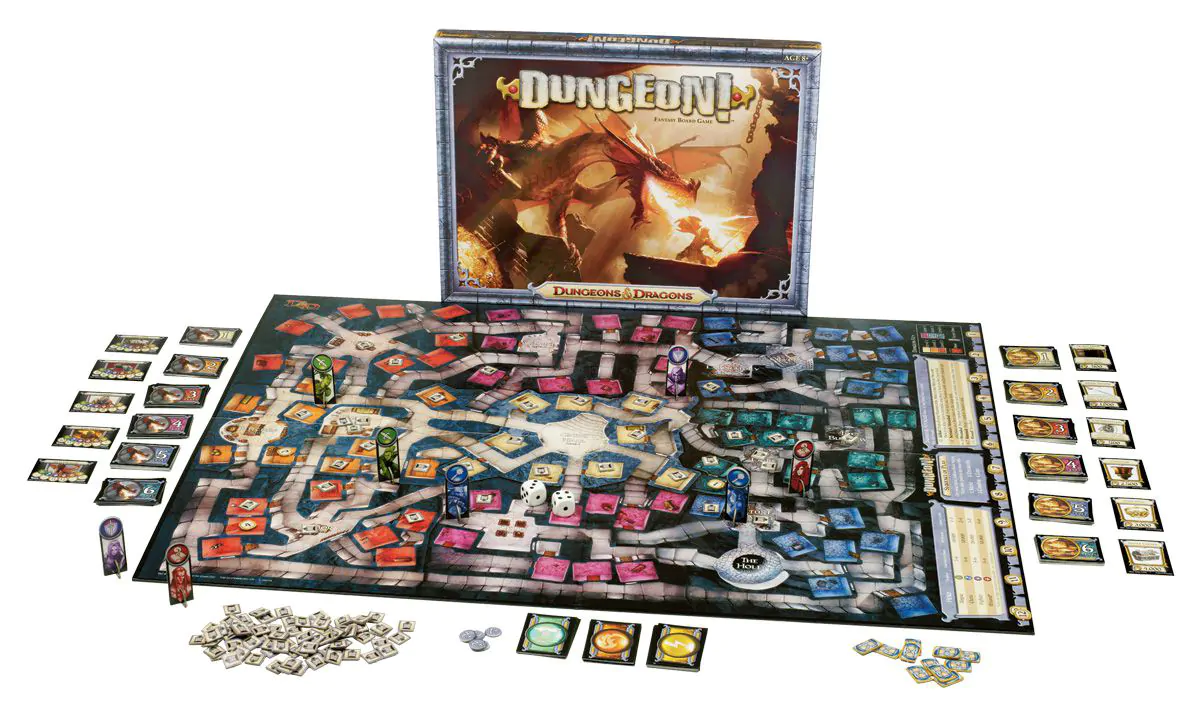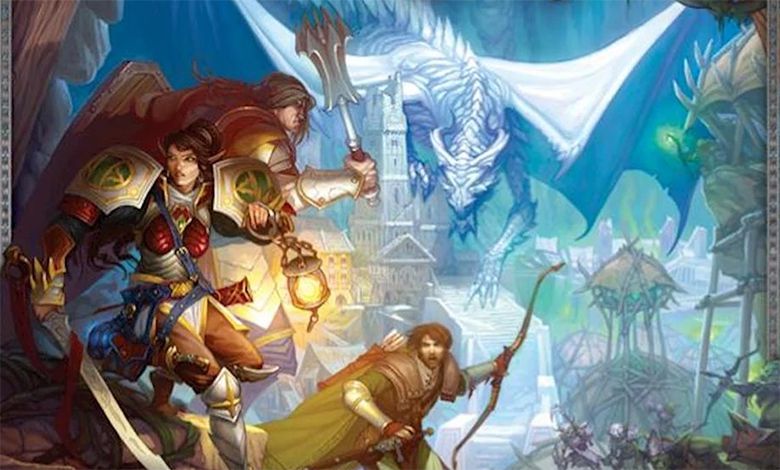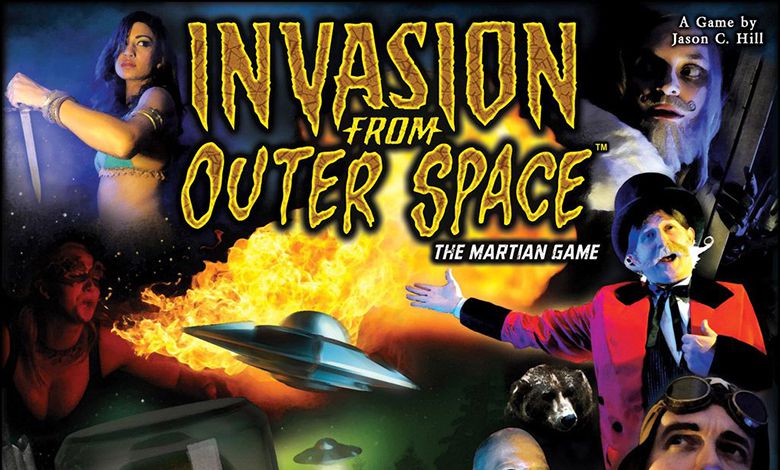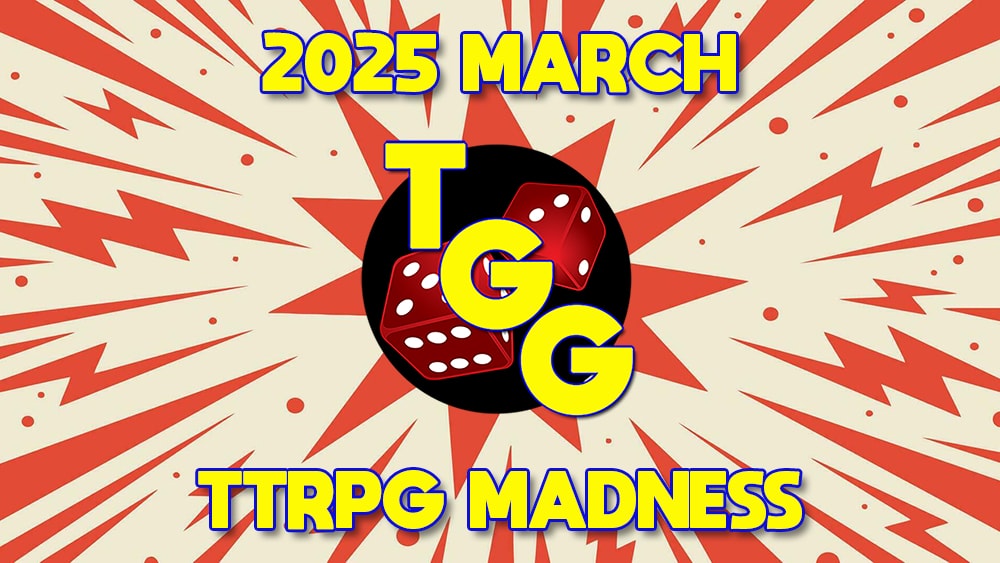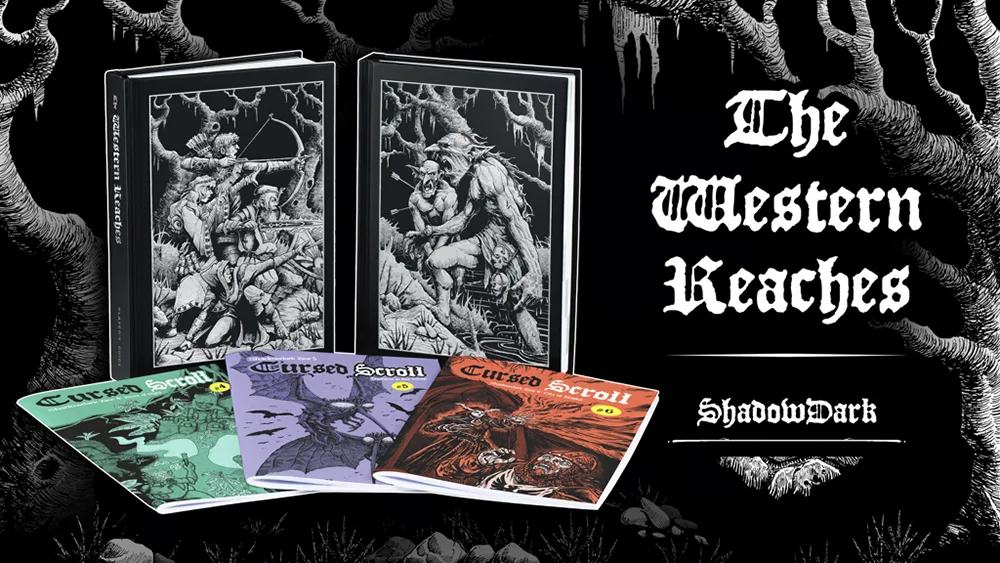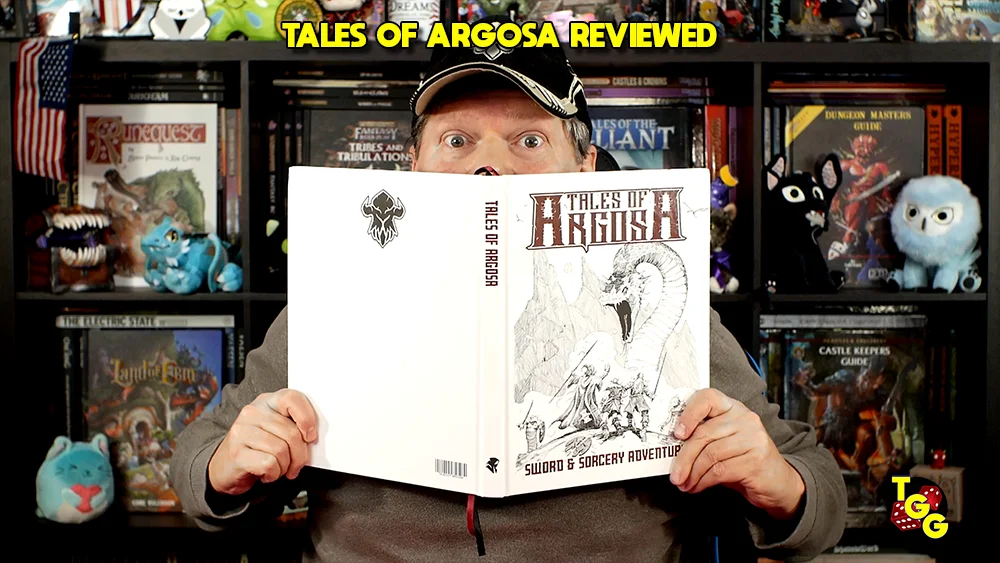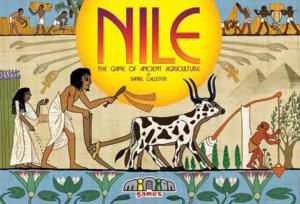
Publisher: Minion Games
Designer: Daniel Callister
Year: 2009
Players: Two to five players
Ages: 8+
Playing Time: 30 Minutes
Retail Price: $16.99
Nile is a card game in which 2-5 players draw cards, plant fields, and harvest crops. The theme is loosely set in ancient Egypt, and thus the crops reflect that period. There are five crops in the game: Papyrus, Wheat, Flax, Castor, and Lettuce.
At the start of the game, each player is dealt five cards. There is a flood card that is placed in the center of the table. This is where you will place the cards that become the harvested suit each turn. After the cards are dealt, the plague of locusts card is shuffled into the deck and the remaining cards become the draw pile. The game will continue until the deck is gone through the number of times equal to the number of players.
A players turn consists of several phases. First, a card is flipped over from the draw pile and placed on the flood card. This card represents the crop that is harvested that turn. The player who has that crop planted in front of him can harvest one card from it to their score pile. Once a player has planted a particular crop, no other player can plant that crop, so you will never have more than five crops on the table at any one time.
After the harvest the current player has the option to trade with the deck, either by discarding two cards and drawing one, or by discarding two cards and flipping over a new flood card and triggering a new harvest. This can be strategically important at times, so you have to keep it in mind.
After trading, the player can either plant a new crop or speculate. Planting can either be two or more cards of the same crop, or one card each of two different crops, or any new cards of crops already in front of you. There are certain cards called speculation cards, and each one of these list two crops on them. You speculate by playing 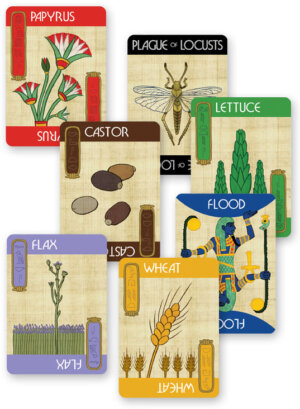
Finally, the player draws two cards and their turn is over. Play proceeds to the next player. Play continues until the deck is gone through the required number of times. This takes less and less time as you play as there are less cards in the deck.
There is also a Plague of Locusts card that immediately wipes out the largest crop currently planted. This gets to be a real pain. In a four player game you will see it pop up four times.
Now here is the tricky part. At the end of the game, each player lays out their scoring cards in piles by crop type from least amount of cards to highest. So for example you would lay out 2 papyrus, 3 lettuce, 3 castor, 4 wheat and 5 flax (assuming those were the cards you have). Your lowest crop total is compared to the other players lowest total, and the one with the highest lowest total wins. Huh? Ok, your lowest pile is the 2 papyrus in the example above. Lets pretend that your buddy Jerry was playing the game with you. His lowest pile is lettuce. He only has 1 lettuce. Since you have more in your lowest pile, you win the game.
This is what blew the game for the group I was playing with. In actuality, this is a very strategic mechanism. You have to think about what crops you are planting and scoring with. You really want to try to score equal numbers from all of your crops, as only your lowest pile will count at the end.
The group I played the game with didn’t want to think that much about a card game. They were more in the mood for Uno level rather than Bridge level strategy wise, so in the end we determined the winner by simply comparing the total number of cards in each players score pile. Whoever had the most cards won. Simple and a no brainer.
When played the correct way, you have to think a lot more about the crops you are planting and the cards in your score pile. The problem is, a lot of times you don’t have a lot of choice with the crops you can plant, as the other players have them planted already.
This game is best as something you could play with your wife, or in the lunchroom in the office. Basically, people that you actually want to compete with. If you are just playing for fun with the family or kids, its easier to skip the complex part of scoring and just count your score piles.
One note, the cards themselves are strange. They are uncoated and have a linen feel, like an uncoated professional playing card would be. So they are not easy to shuffle and may be prone to damage. Minion includes a pack of card sleeves with every copy of the game though, to alleviate the problem.
The game was ok, I enjoyed it. It was another card game like many other card games. If you are an Egypt buff, or you like the strategic card games, then you might want to pick this one up.
- A Dungeon Delve for Kids?: A Review of Dungeon! - Oct 24, 2022
- Better, Stronger, Faster | Descent: Journeys in the Dark Second Edition Reviewed - Oct 23, 2022
- Your Planet is Doomed!: Invasion from Outer Space Reviewed - Oct 22, 2022


